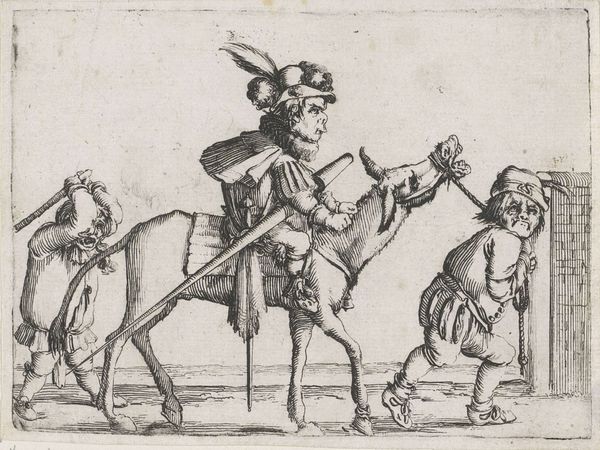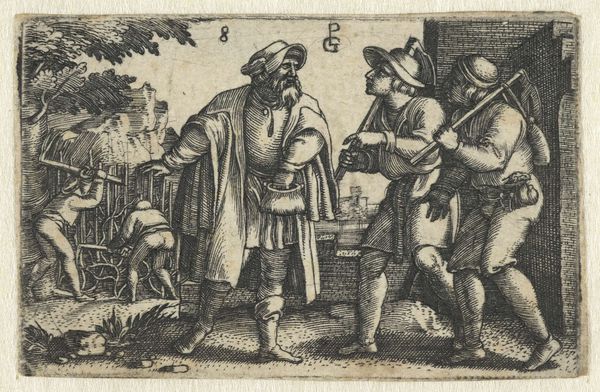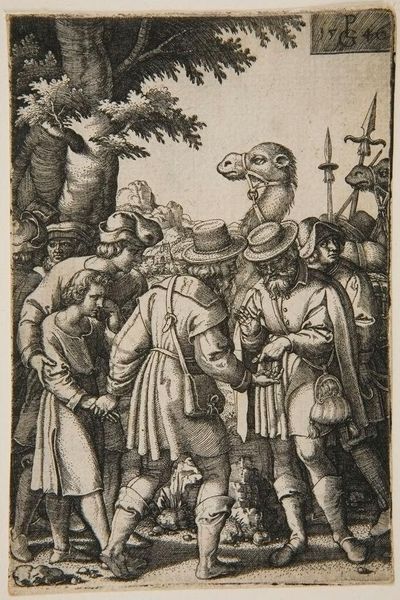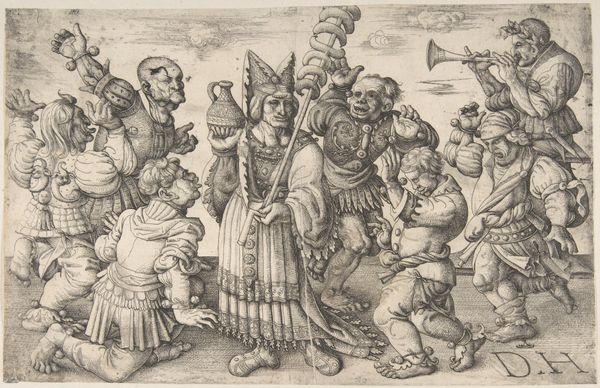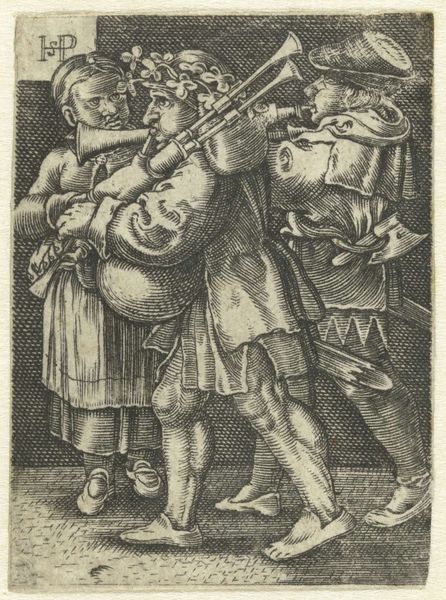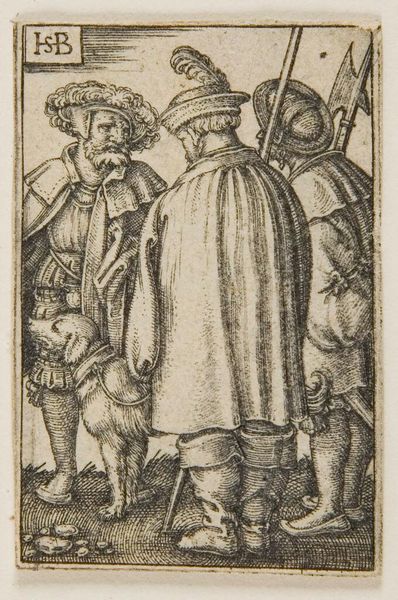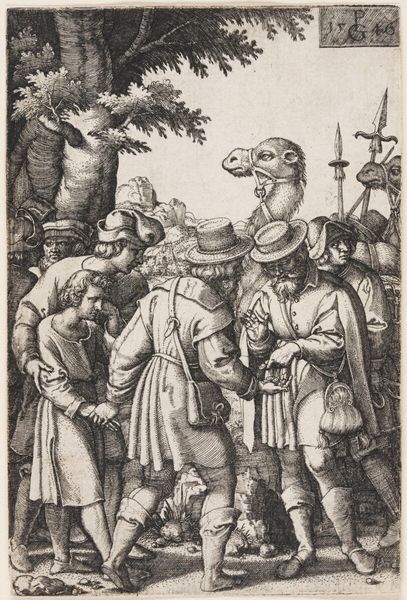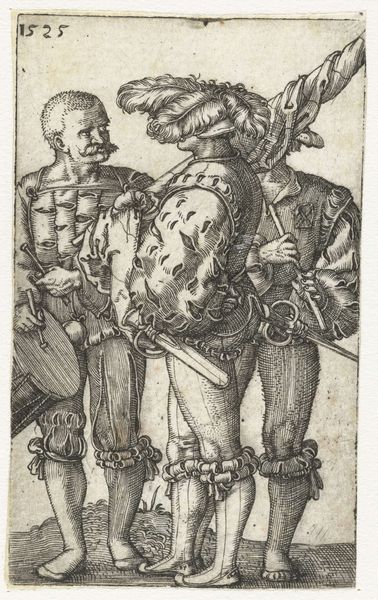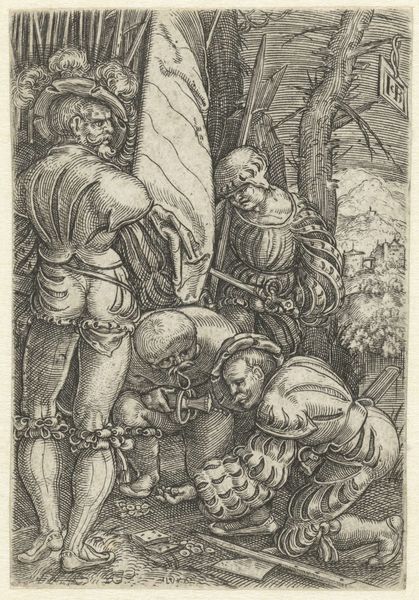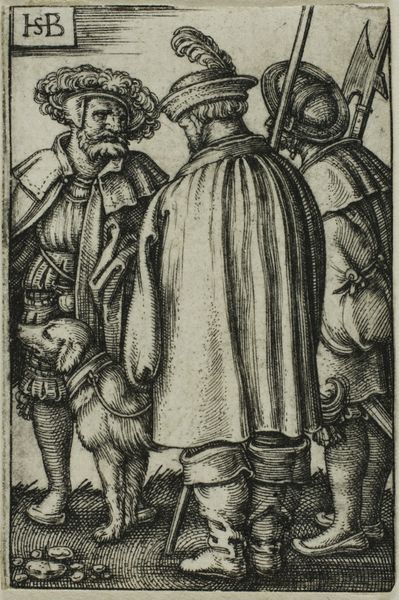
drawing, print, etching, ink, engraving
#
drawing
#
ink drawing
#
narrative-art
#
pen drawing
# print
#
etching
#
caricature
#
mannerism
#
figuration
#
ink
#
history-painting
#
engraving
Dimensions: sheet: 3 3/4 x 93 5/8 in. (9.5 x 237.8 cm)
Copyright: Public Domain
Curator: Here we have "Procession of Monstrous Figures," a striking engraving created around 1615 by Wendel Dietterlin the Younger. Editor: It strikes me immediately as grotesque. The expressions are exaggerated to the point of caricature, almost repulsively so. Curator: Indeed. Dietterlin, working firmly within a Mannerist aesthetic, distorts the human form, employing elongated noses and bulging eyes. He revels in complexity of line and the overall composition—note the way the figures seem to spill out of the frame. Editor: And it's interesting how these grotesque features seem at odds with their finery—these are monstrous beings clad in detailed garments. Consider also that it's an engraving: a meticulous, labor-intensive printmaking process intended for relatively wide dissemination. What does it tell us about the viewing habits of the day, about who this was made *for*? Curator: That's an excellent question. The density of the visual information here suggests an elite audience, viewers capable of decoding this. There's also a playful element. Caricature, at the time, often served a moralizing function but within a carnivalesque atmosphere. It almost has roots in commedia dell'arte. Editor: I agree; it points to an enjoyment of inversion, of a material reality subverted. We’re witnessing bodies that carry themselves with a strange, and maybe defiant, dignity, even as they display bizarre deformities. The materiality of those deformed bodies feels…pointed. Is it just moral commentary, or is there a sense of empathy there too? Curator: A fascinating proposition! I hadn't considered empathy so explicitly here, though the carefully rendered detail perhaps invites it, slowing our gaze. Dietterlin certainly doesn’t shy away from the labor involved, inviting careful inspection and encouraging repeat viewings. Editor: So, not just a glance, but an encounter. To linger is to meditate on who makes up "society" and, critically, on whose image it excludes, whether due to actual deformation or perceived monstrosity based on class or labor. Curator: Yes, perhaps this ‘procession’ asks us not only to recoil but also to reflect upon our own judgments. It prompts consideration of our societal definitions of 'normalcy', viewed through an extraordinary level of precision within each stroke of line. Editor: Definitely a complex and provocative image. It pushes the boundaries of representation and taste. Curator: A journey into both skill and spectacle. Dietterlin challenges us with just how strange 'familiar' visual representation can be, given certain formal twists.
Comments
No comments
Be the first to comment and join the conversation on the ultimate creative platform.

